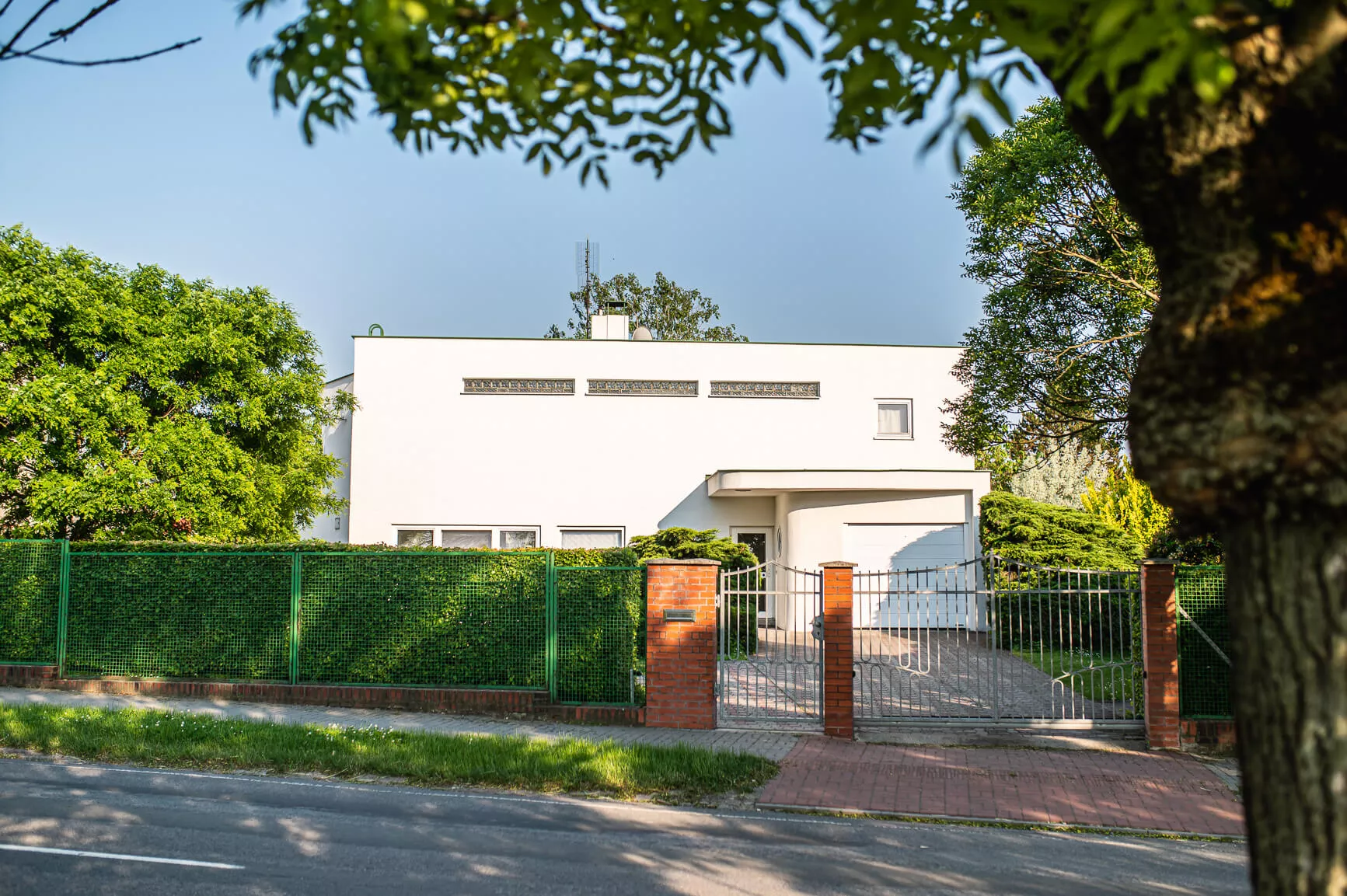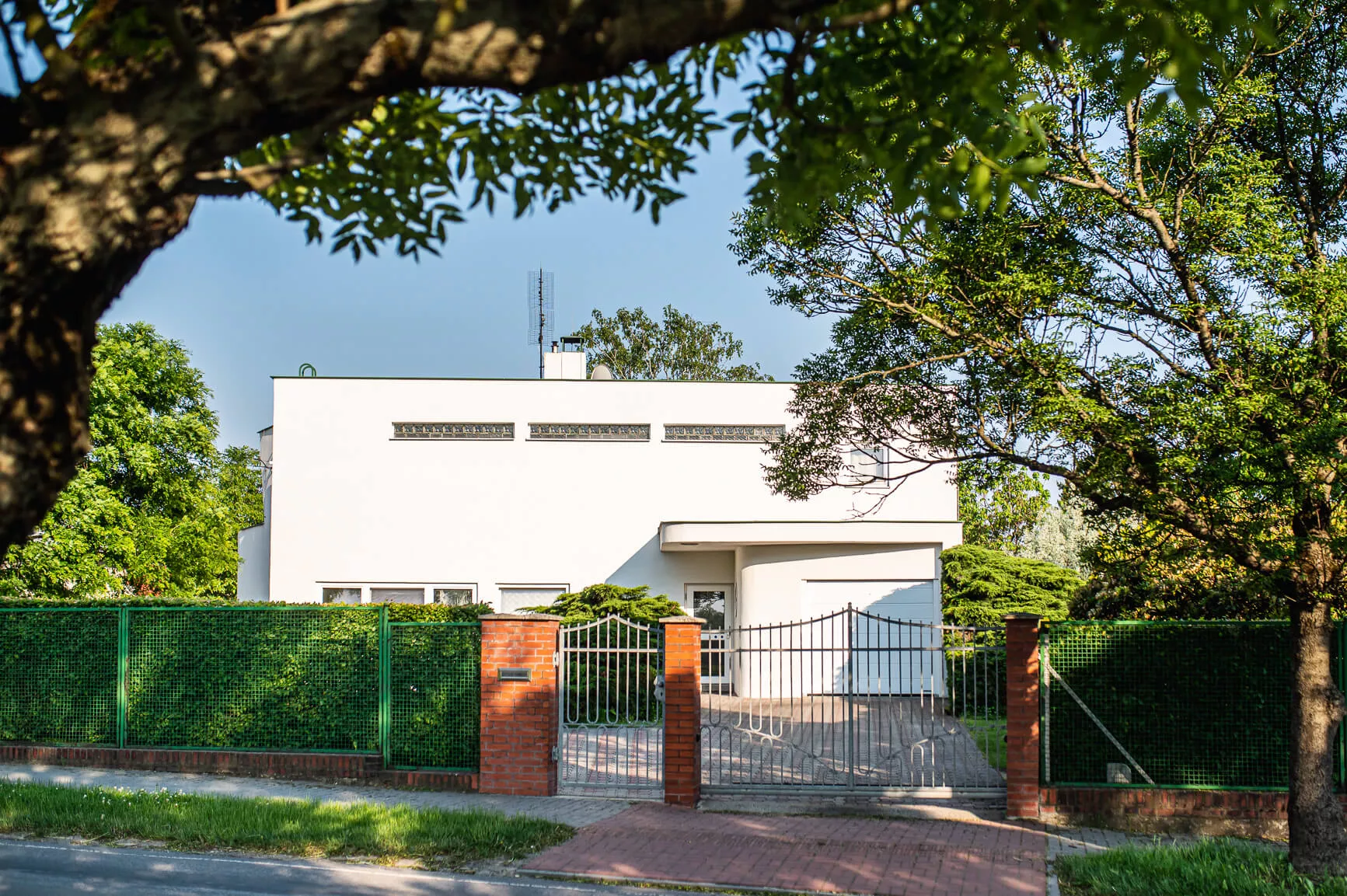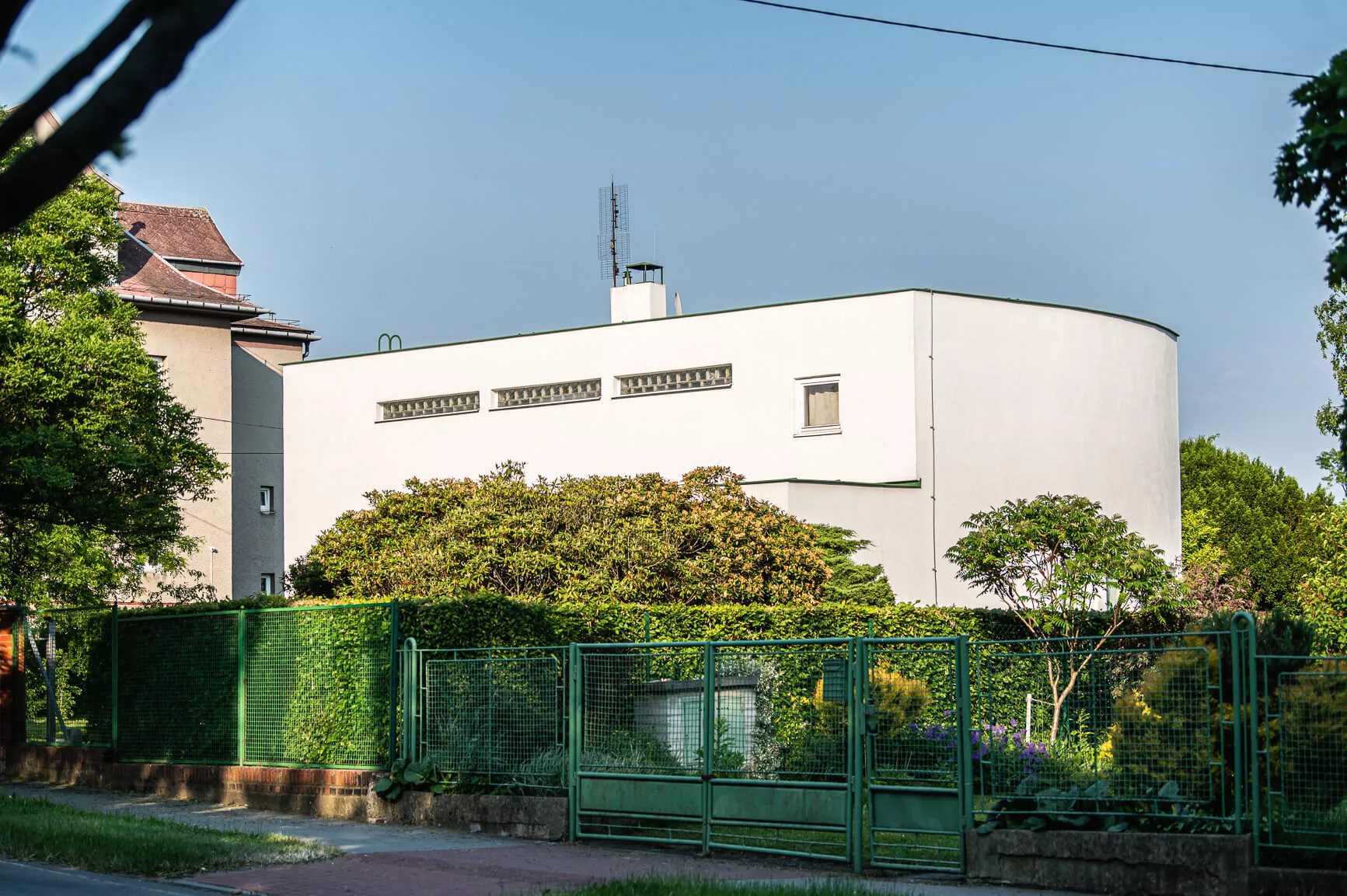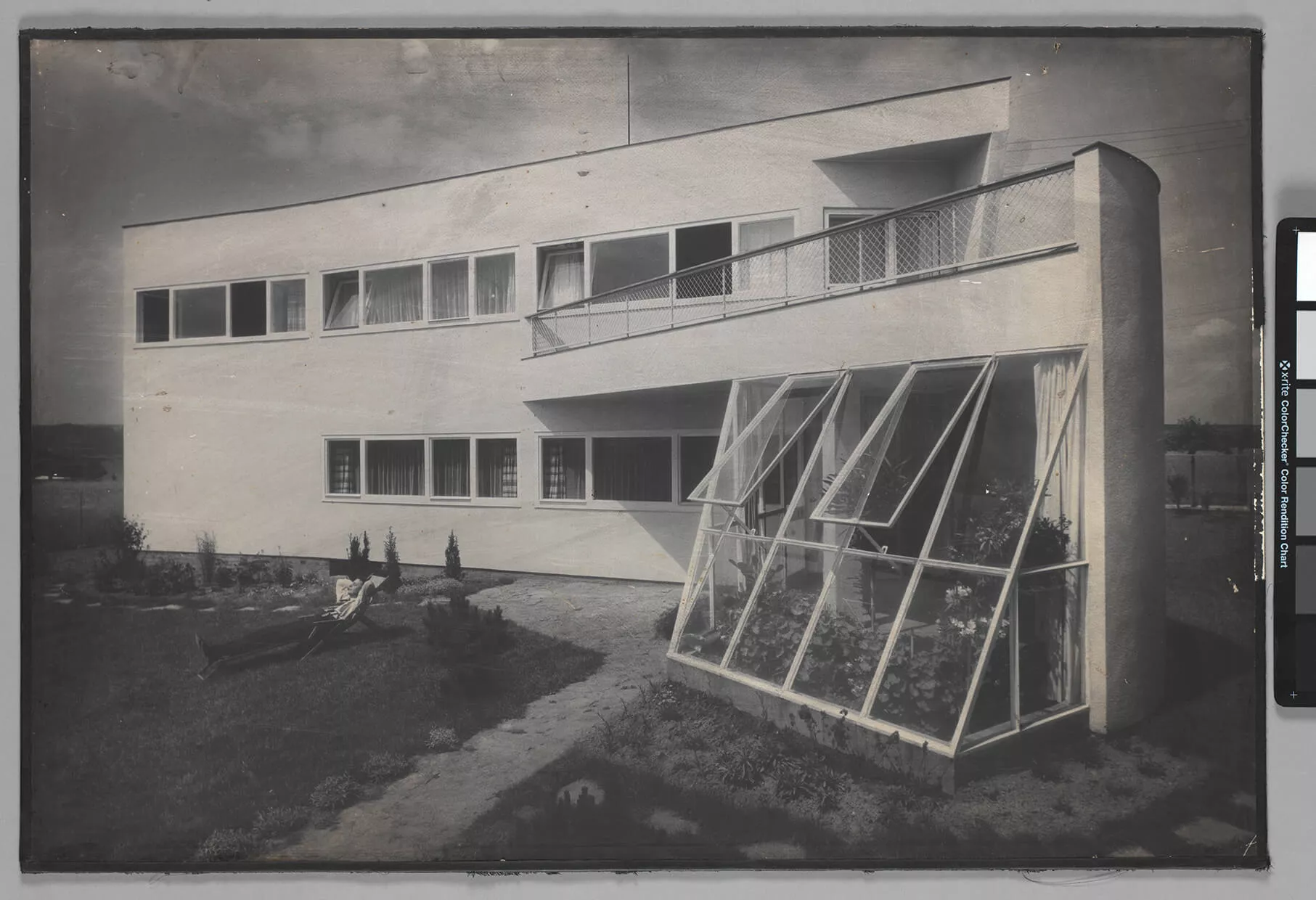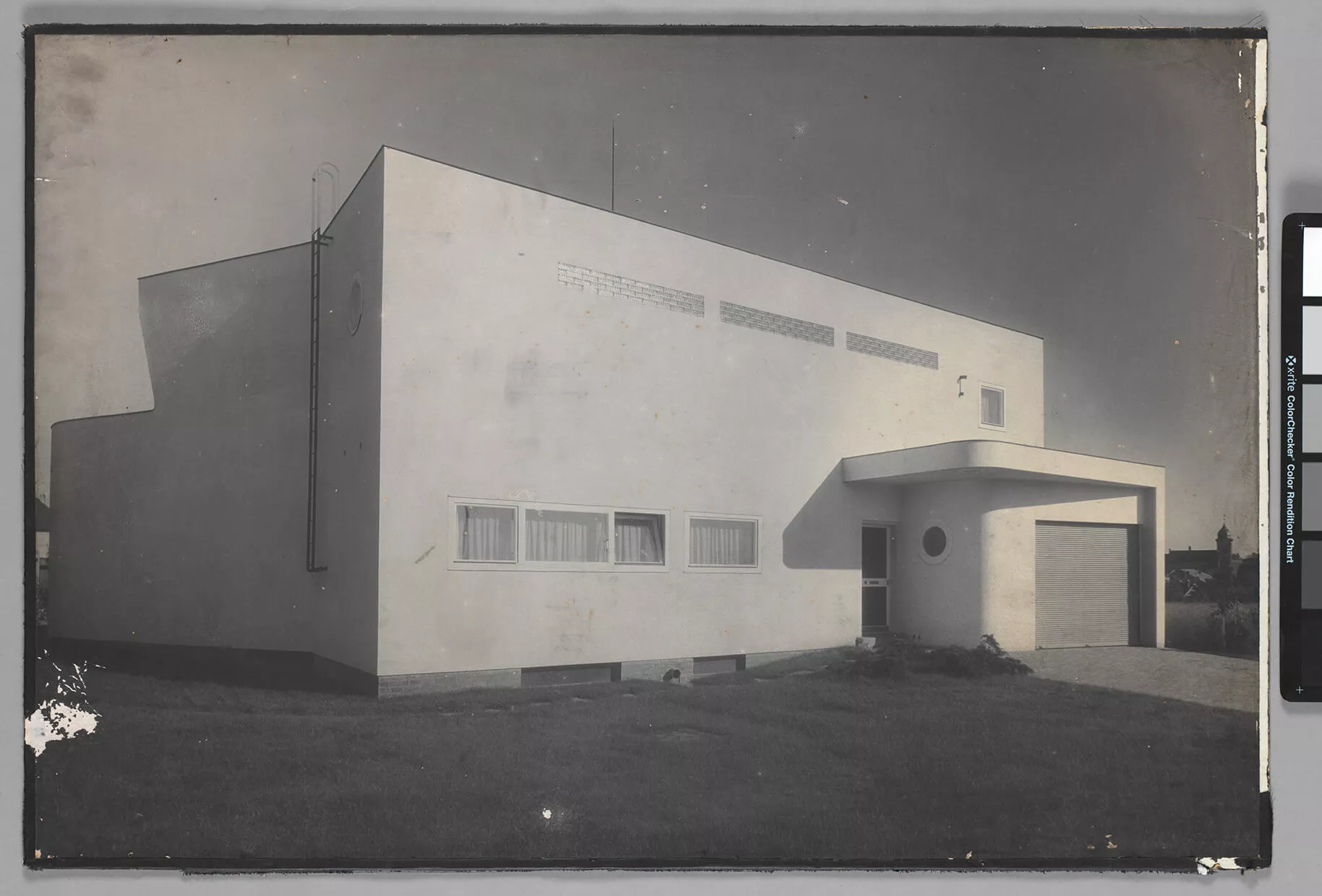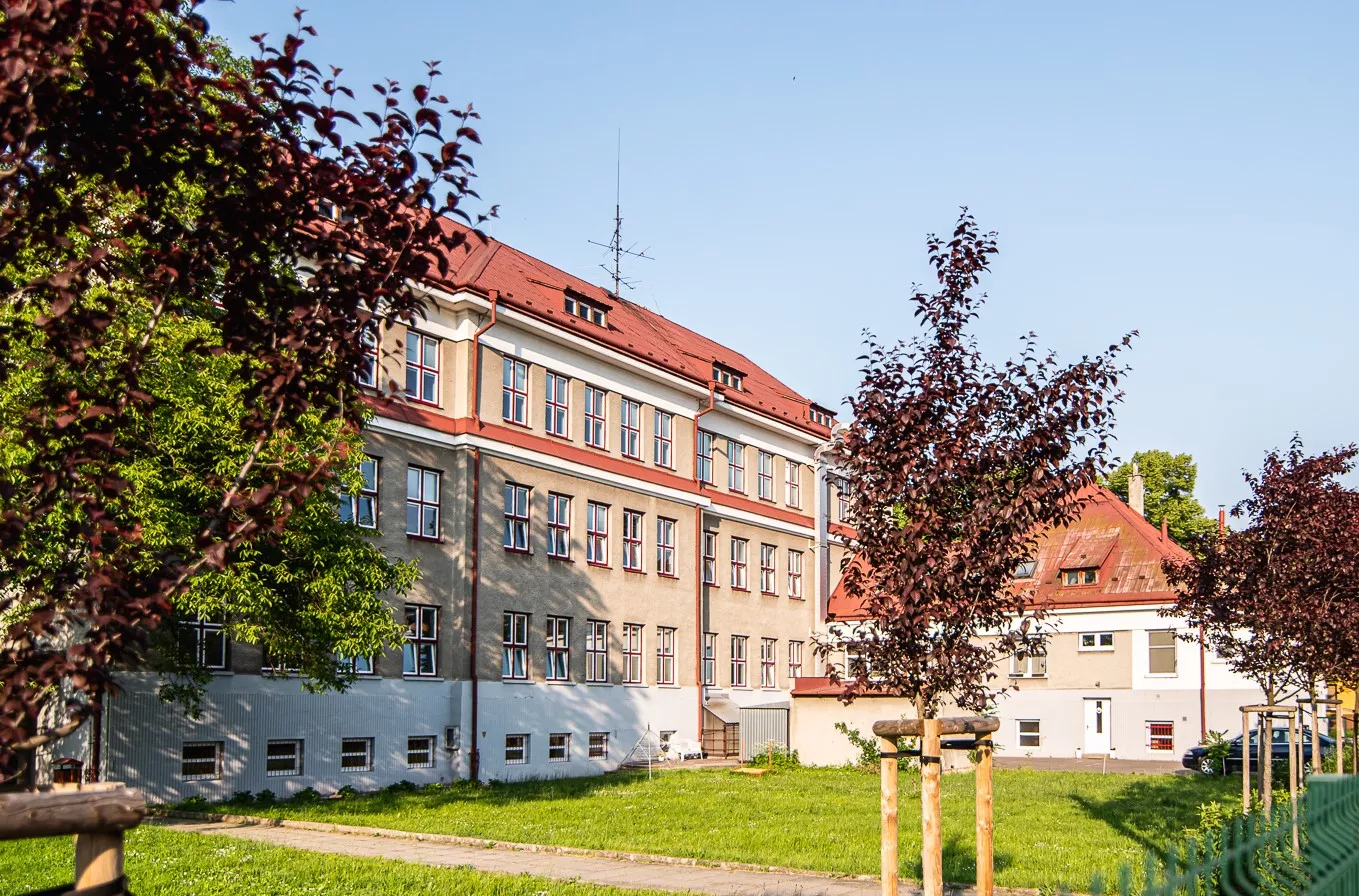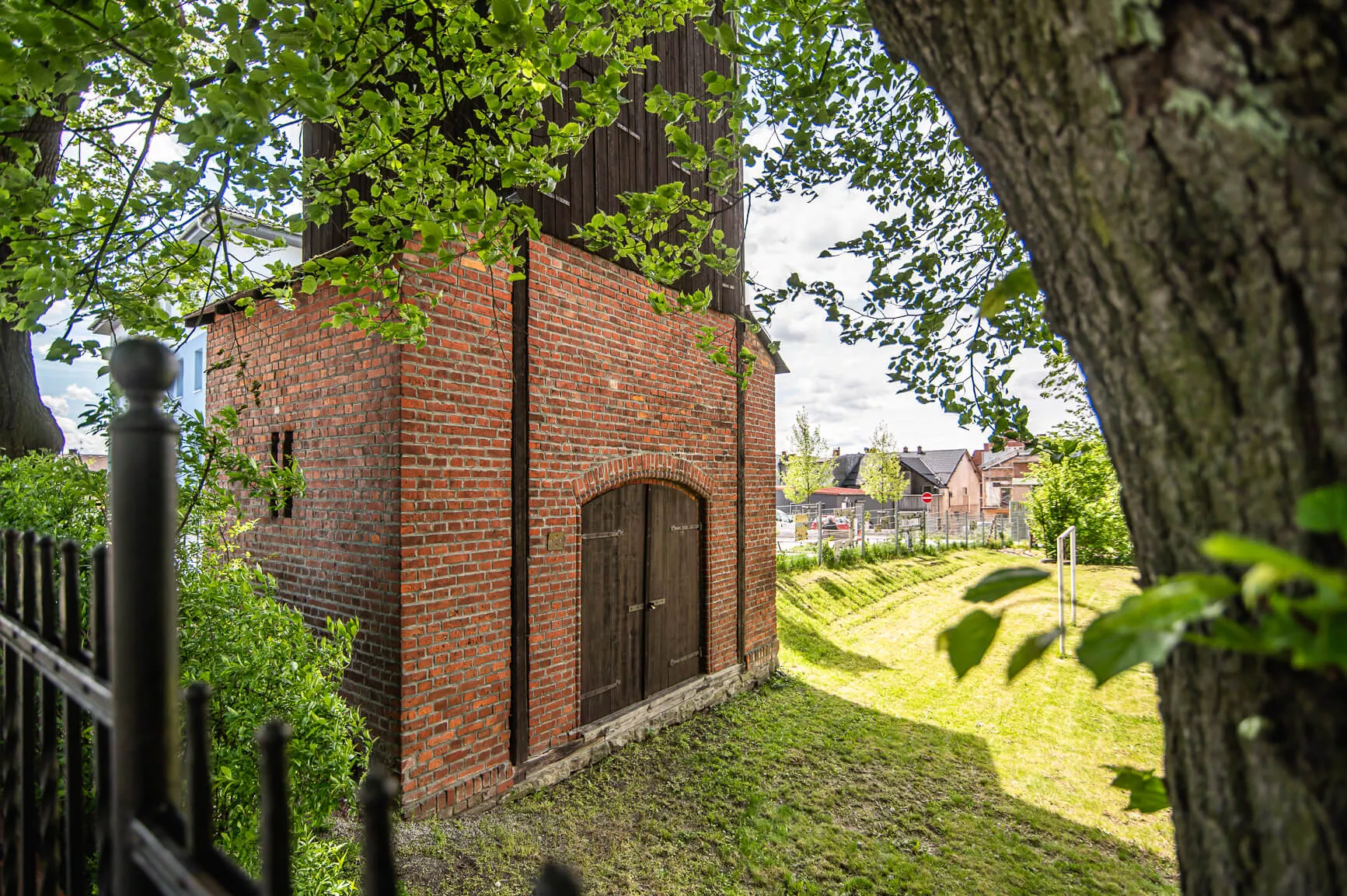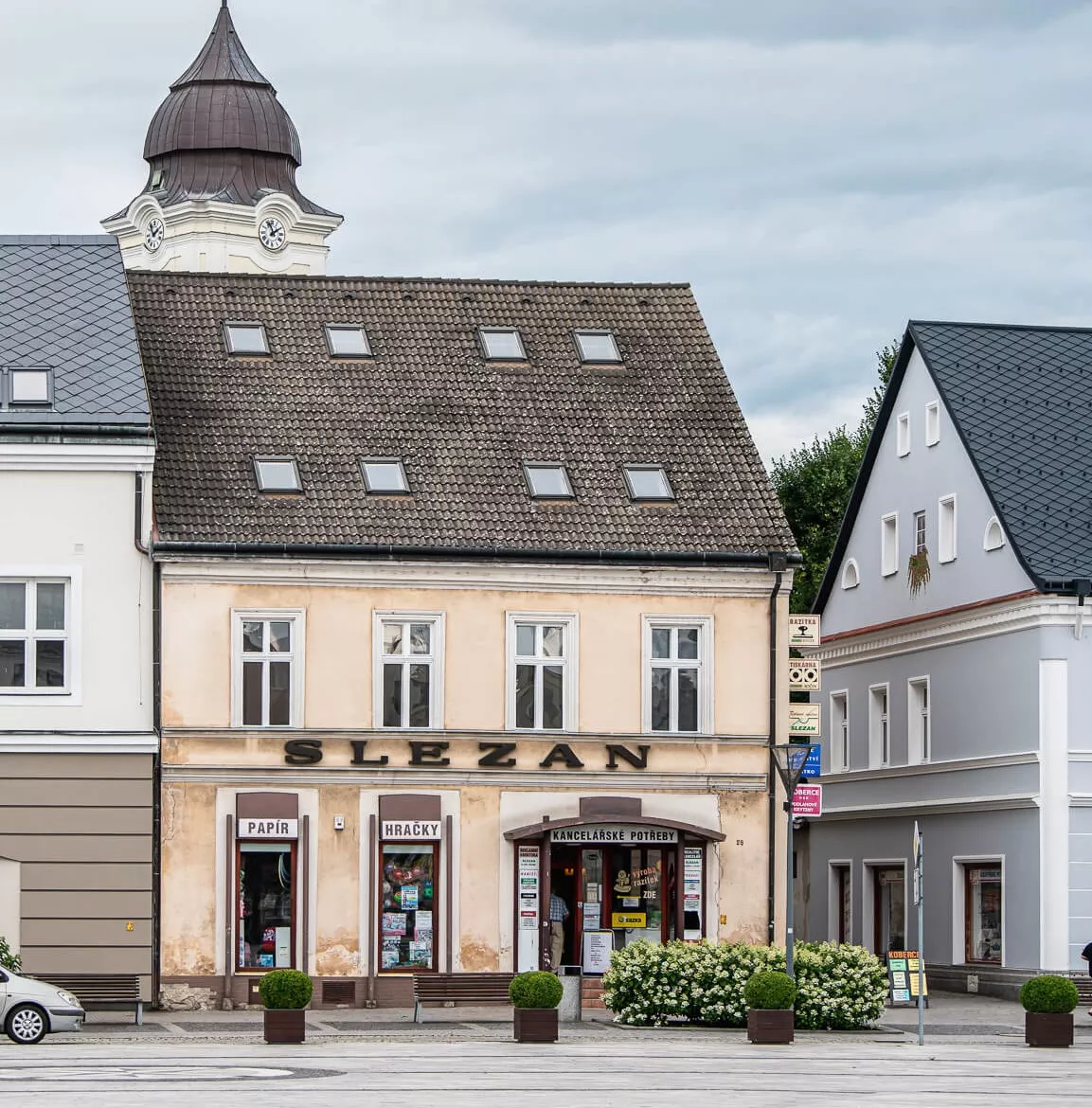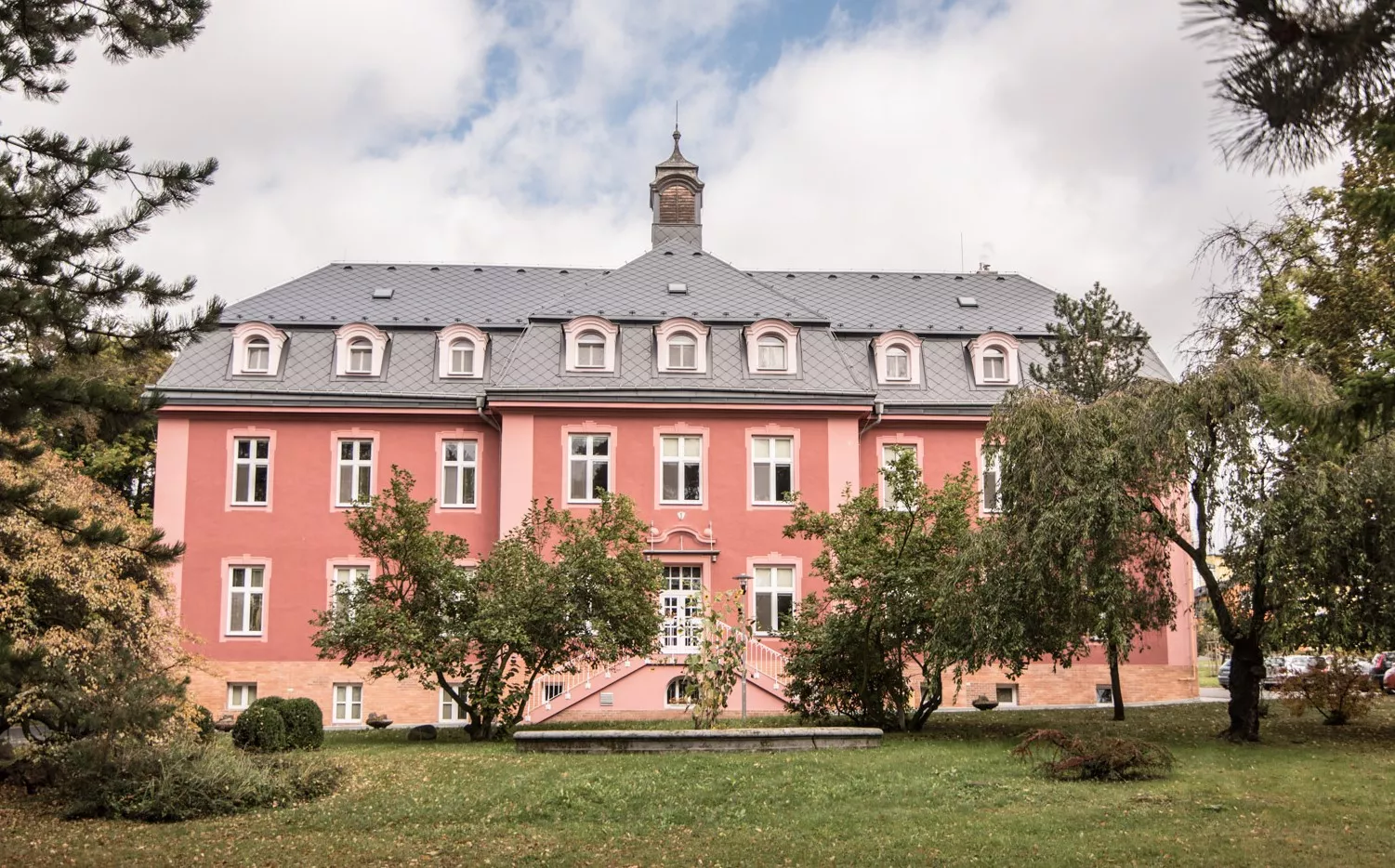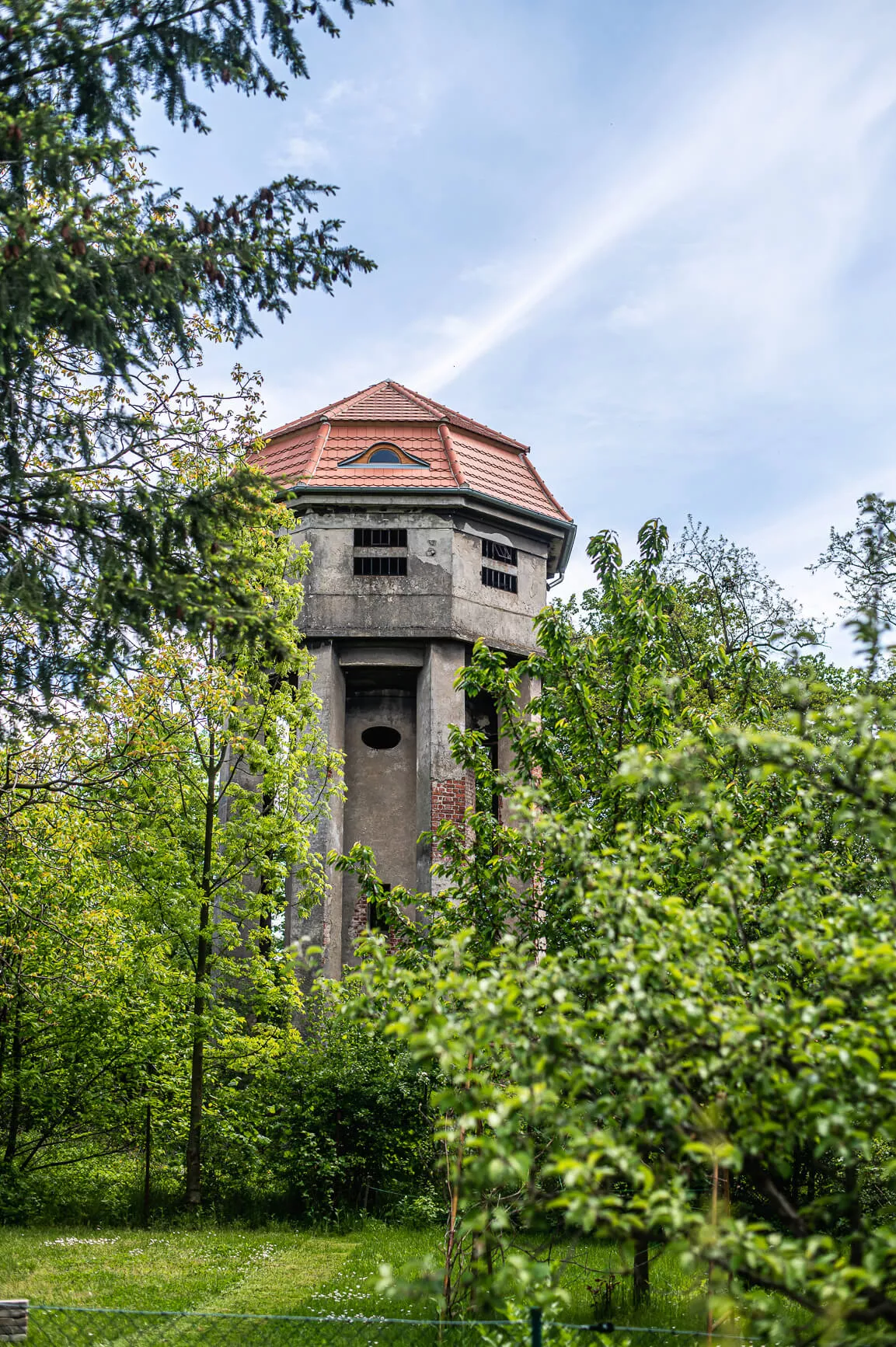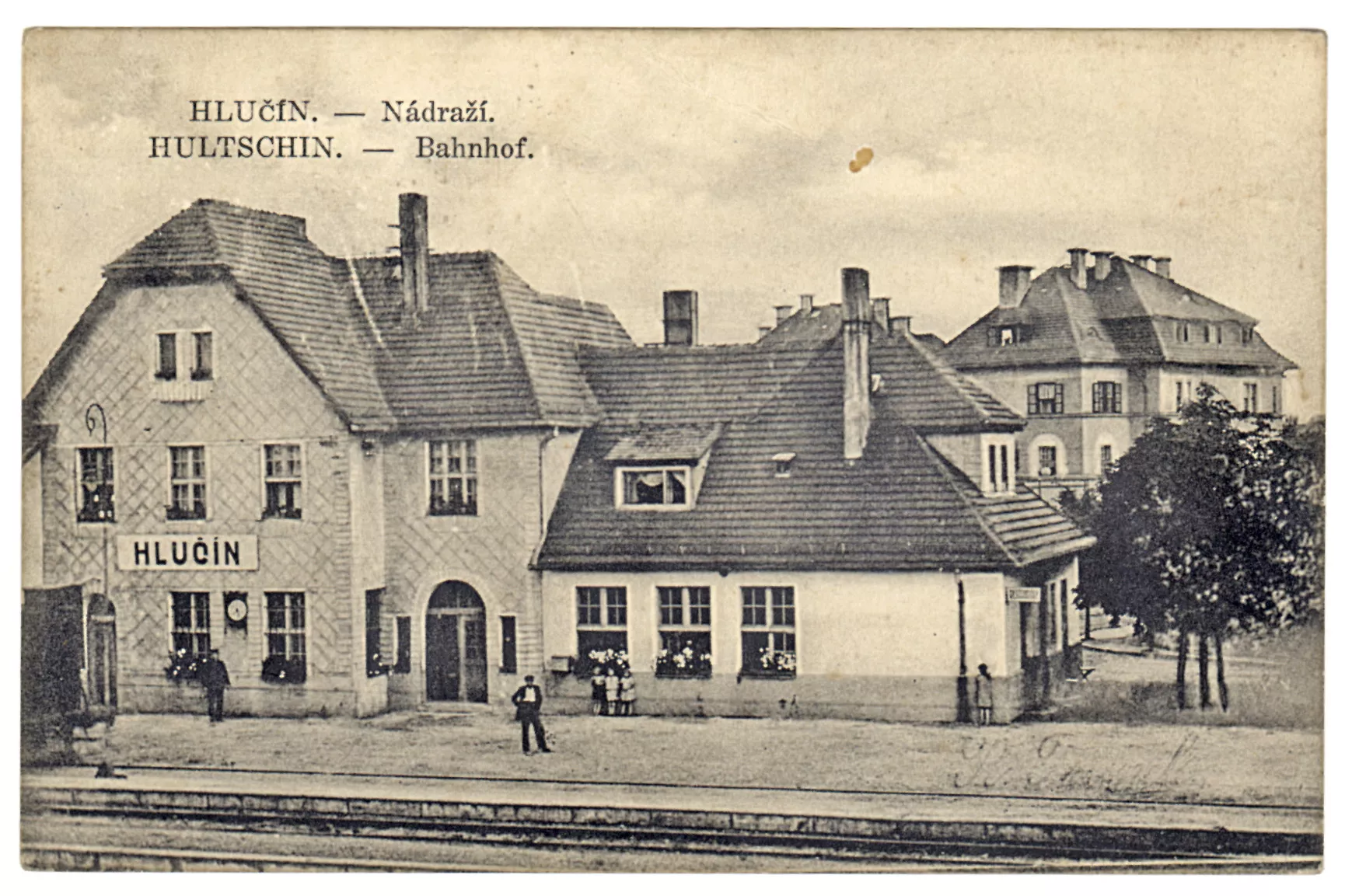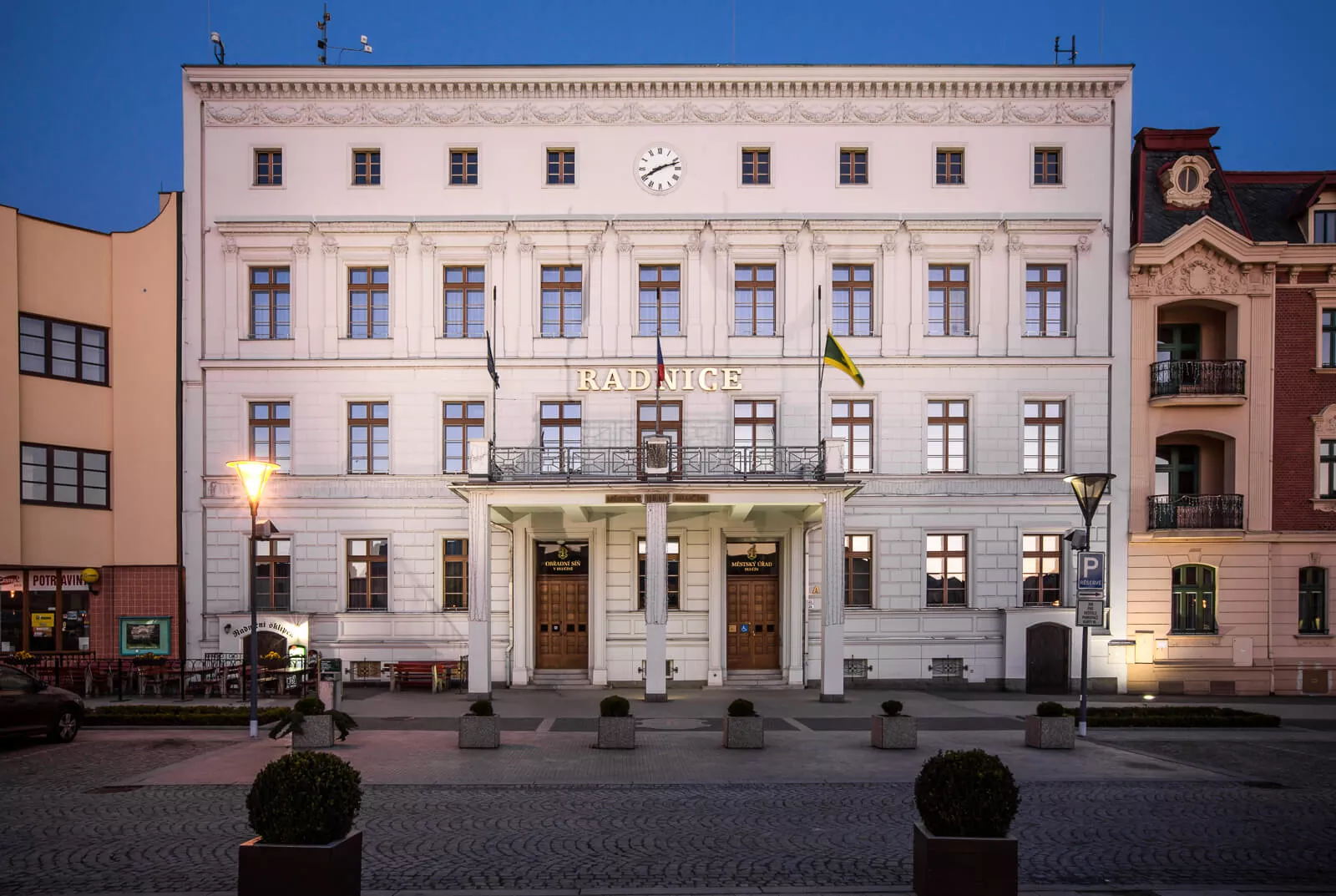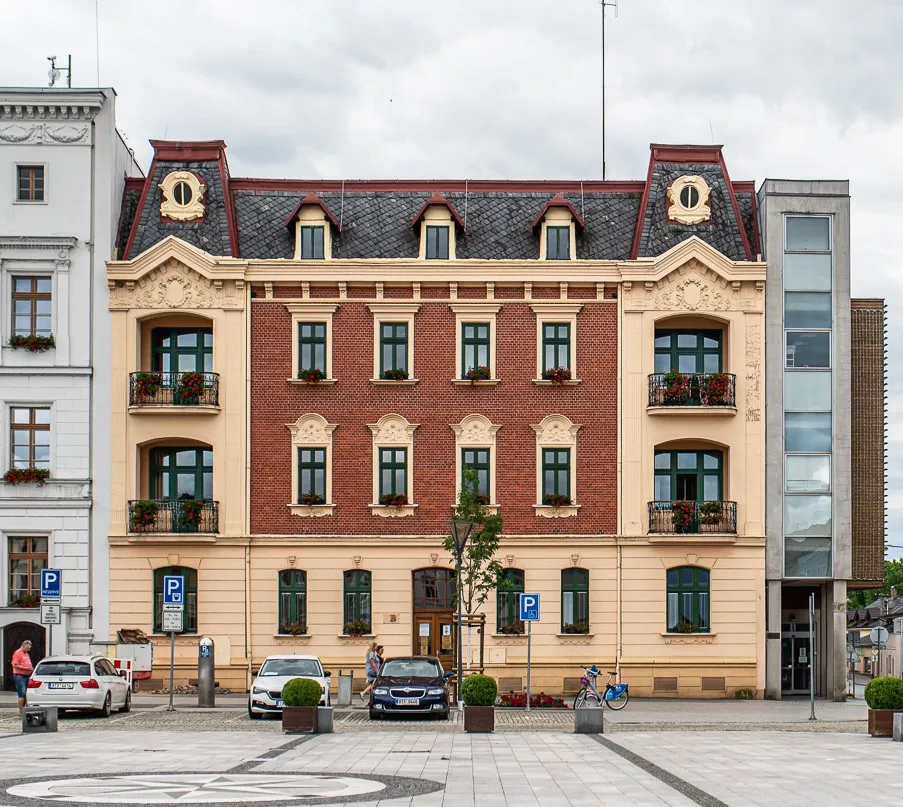This Functionalist villa is an icon of interwar architecture not only in Hlučín, but in the wider region. The generously proportioned, aerodynamically shaped house was designed for the district veterinarian, František Kremer (1894–1970), by the Ostrava–Olomouc architect Lubomír Šlapeta (1908–1983). The impulse for the choice of designer is said to have been the presentation, at an art exhibition in Ostrava in 1932, of Šlapeta’s designs for the Frýdek villa of the entrepreneur Oskar Landsberger, where Kremer was struck, alongside the modern aesthetics, by the organically formed curves of the terrace and external staircase. This approach drew on the work of the German architect Hans Scharoun (1893–1972), a leading proponent of organic Functionalism and Šlapeta’s teacher at the academy in Wrocław. Kremer asked the architect to apply similar principles to the Hlučín commission.
While the street façade of the villa is geometrically austere and visually closed, pierced only by a horizontal strip of windows and glass blocks lighting the corridor and stairwell, the garden front presents a wholly different artistic world. Its flowing plan is defined by organic curves that round the outer walls. The garden façade is broken by long strip windows that flood the interior with light and offer panoramic views of the garden and the town; the same is true of the dynamically projecting triangular first-floor terrace. Beneath it, a conservatory stands beside the garden entrance to the house, which the terrace roofs, achieving full integration of house and nature. On the ground floor, besides the kitchen and garage, a large living space could be divided by sliding partitions into a study, library, and dining room, the latter opening into the conservatory. The first floor, by contrast, housed the private rooms, bedrooms, and a large bathroom.
In its modern idiom, in the spirit of international Functionalism, the villa remained utterly unique both in the town and in the wider Hlučín region. The contemporary critic Zdeněk Bár wrote of it: “It is true modern beauty, created from the interpenetration of house and garden, from the play of planes of white plaster, glossy sheets of glass, and green lawns. The house’s distinctly evolving form and flowing lines create an impression of movement and freedom. Here the owner has what he wished for: it is an image of freedom in miniature, it is independence and a private realm. It is an architectural poem of perfect substance and perfect form.”
